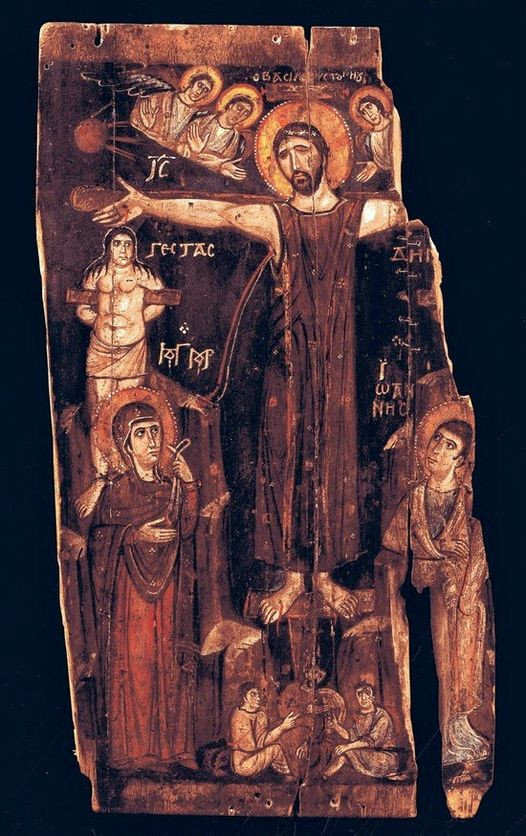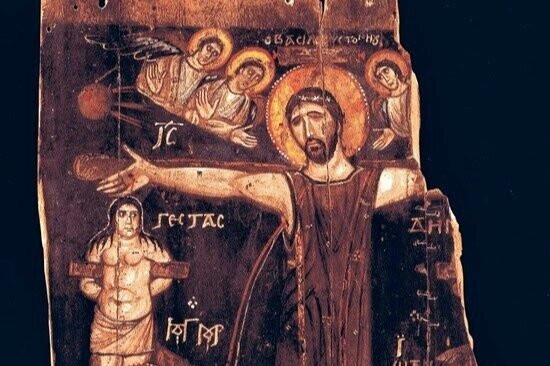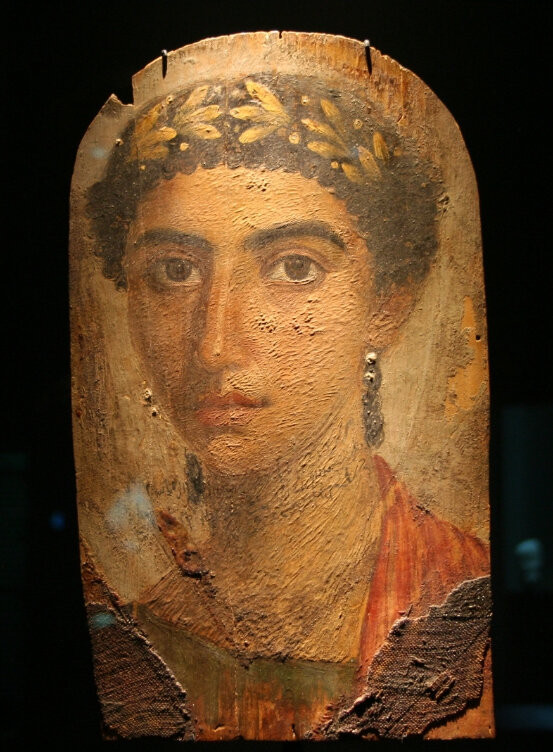A Timeless Masterpiece on Mount Sinai
In the heart of Egypt’s Sinai Peninsula, nestled within the ancient walls of the Greek Orthodox Holy Monastery, lies a treasure that has captivated the imagination of art historians and theologians alike. The St. Catherine icon, a remarkable panel painting depicting the crucified Christ, stands as a silent witness to the birth of Christian iconography and its deep roots in Greco-Roman artistic traditions.

A Window into Early Christian Art
As one of the few surviving early Christian icons, this masterpiece offers a unique glimpse into the artistic sensibilities of a bygone era. The icon’s composition is a harmonious blend of religious narrative and classical aesthetics, showcasing the crucifixion of Christ surrounded by figures from the Passion story.
The Greco-Roman Legacy
Naturalism and Emotion
The artist’s hand reveals a mastery of Greco-Roman techniques. Christ’s body on the cross is rendered with an anatomical precision that speaks to the artist’s classical training. The use of chiaroscuro to create depth and volume breathes life into the two-dimensional surface.

The supporting cast of characters, from the grieving Virgin Mary to the distraught John the Evangelist, are portrayed with a raw emotional intensity reminiscent of the best Hellenistic sculptures. Their expressions of sorrow and anguish are palpable, drawing the viewer into the pathos of the scene.
From Fayum to Sinai
The St. Catherine icon is not an isolated phenomenon but part of a rich artistic lineage. Its style can be traced back to the haunting Fayum mummy portraits and the vibrant frescoes of Pompeii. The expressive eyes, elongated noses, and small mouths that characterize these earlier works find their echo in the faces of the icon’s figures.

A Christian Vision
Symbolism and Faith
While the icon’s artistic roots may lie in the classical world, its soul is undeniably Christian. The composition is a carefully crafted theological statement, with Christ at its center as the focal point of Christian faith. Every element, from the placement of figures to the use of color, serves to underscore the profound significance of the Crucifixion in Christian doctrine.
A Bridge Between Worlds
The St. Catherine icon stands as a testament to a pivotal moment in history when the artistic heritage of the Greco-Roman world was embraced and transformed by the nascent Christian faith. It is a bridge between two worlds, a fusion of classical beauty and spiritual devotion.

As visitors to the monastery gaze upon this ancient work, they are not merely observing a relic of the past. They are witnessing the birth of a new artistic tradition, one that would go on to shape the visual language of Christianity for centuries to come.
In the St. Catherine icon, we see more than paint and wood—we see the living legacy of a cultural exchange that continues to inspire and enlighten us to this day.
